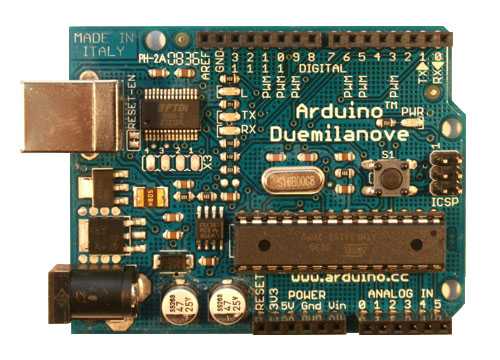History
Arduino is a microcontroller-based platform that consists of open-source hardware, software, and programming tools. The concept of the Arduino ecosystem revolves around simplicity, making microcontrollers more accessible to the general public and great educational aids.
Arduino was created in 2003 by a group of academics at the Interaction Design Institute Ivrea in Italy. The platform was named after a bar in the same town where the academics met to discuss the project. One of the project's goals was to remove the barrier of entry for students who wanted to realize automation ideas but did not have enough resources to purchase expensive controllers or knowledge to build their printed circuit boards.
Arduino hardware is classified into three families: Nano, MKR, and Classic. In addition, hundreds of controllers and accessories have been released over the last several years by the Arduino company and others. Arduino and Adafruit are two of the most recognizable vendors of Arduino hardware.
The Nano family offers the most compact and least expensive boards. These boards rely on energy-efficient, embedded ARM processors that can perform many tasks despite their ultra-compact size. Some boards in this family offer wireless network connectivity, Bluetooth, and IoT functionalities. Most of the boards work with a 3.3 V power supply.
Arduinos are programmed using the Integrated Development Environment (IDE). The Arduino IDE is available for Windows, macOS, and Linux. The programming language is based on a variant of C and C++; therefore, people familiar with these languages will be able to start coding right away.
Arduino Diecimila
The first widely distributed Arduino board, the Diecimila, was released in 2007, and since its initial release the Arduino family has evolved to take advantage of the various types of Atmel AVR MCU devices. The microcontroller was a ATmega168V.
"Diecimila" means 10,000 in Italian and was named thusly to mark the fact that over 10,000 Arduino boards have been made. The Diecimila is the latest in a series of USB Arduino boards.
The Arduino Diecimila is a microcontroller board based on the ATmega168. It has 14 digital input/output pins (of which 6 can be used as PWM outputs), 6 analog inputs, a 16 MHz crystal oscillator, a USB connection, a power jack, an ICSP header, and a reset button. It contains everything needed to support the microcontroller; simply connect it to a computer with a USB cable or power it with a AC-to-DC adapter or battery to get started.
The ATmega168 has 16 KB of flash memory for storing code (of which 2 KB is used for the bootloader). It has 1 KB of SRAM and 512 bytes of EEPROM (which can be read and written with the EEPROM library).

https://docs.arduino.cc/resources/datasheets/Datasheet-ATmega48-88-168-doc2545.pdf